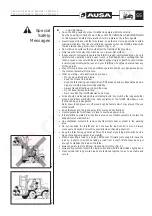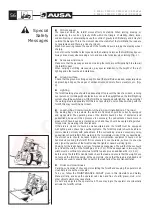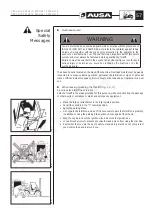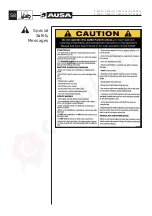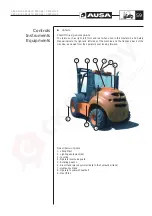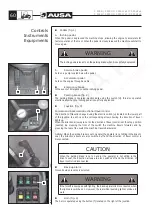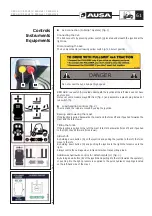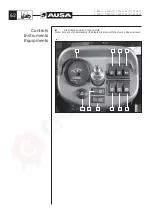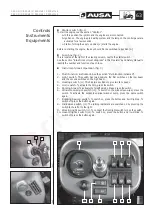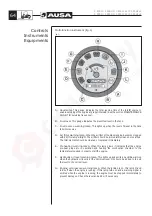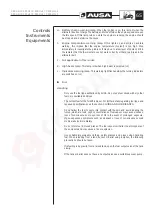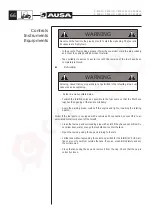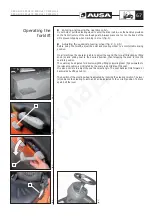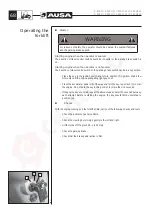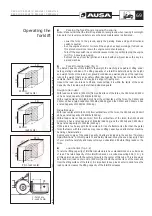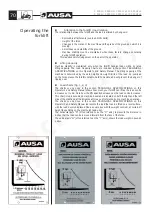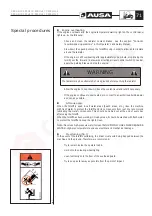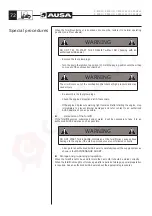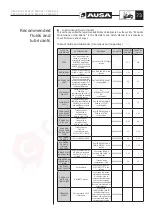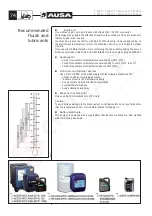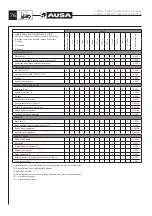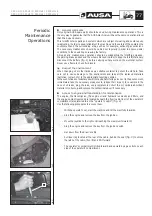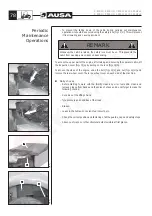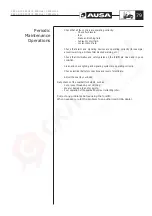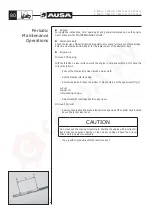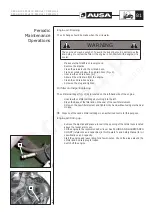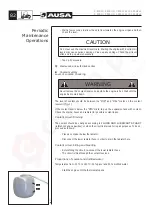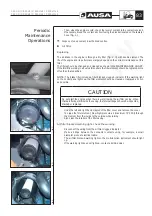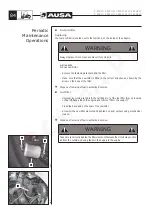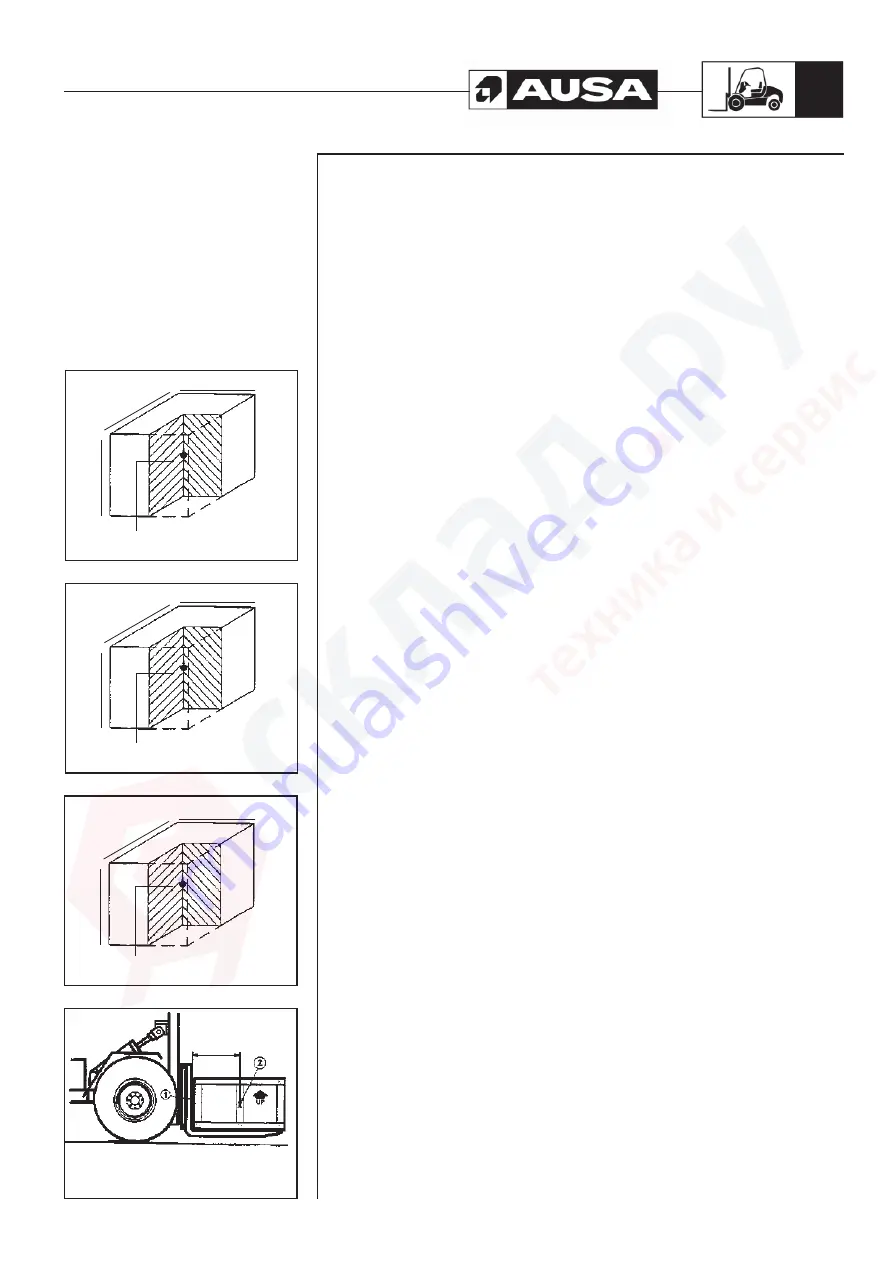
Parking the forklift and stopping the engine
Note:
Make certain that the forklift is parked on level ground when leaving it overnight.
Also park it on level ground before any scheduled maintenance is attempted.
- Lower the forks to the ground, apply the parking brake and push directional
switch to neutral.
- Run the engine at idle for 1 minute if the engine has been working at full load -as
this procedure will cool down the engine components evenly.
- Turn off the key switch in a counterclockwise motion to position to stop the engine
(a) (fig. 1 previous page)
.
- Remove the key from the ignition and take it with you. Never leave the key in a
parked machine.
Forklift nominal load (fig. 1)
The Rated Capacity of this forklift is the weight the machine is capable of lifting under
safe operating conditions. The lifting capacity of a forklift is determined by the height
and weight limits of the load. Poor ground conditions as well as shape of the load may
reduce the weight that can be safely lifted. Overloading the forks can make the forklift
unstable, hard to handle, and may be in danger of tipping over.
Inspect the load you intend to lift and make certain it is within the limits of the Load
Capacity Chart located on the left hand side mudguard.
Rough terrain use:
With load center at 20in (500 mm) from vertical face of the forks, the C400H and C400H
x4 has a rated capacity of 8818lbs (4000 kg)
With a load center at 24in (600 mm) from the vertical face of the forks, the C400H and
C400H x 4 has a rated capacity of 8146lbs (3695 kg) and the C500H and C500H x 4 has
a rated capacity of 11023lbs (5000 kg).
Industrial use:
With load center at 20in (500 mm) from vertical face of the forks, the C400HI and C400HI
x4 has a rated capacity of 8818lbs (4000 kg)
With a load center at 24in (600 mm) from the vertical face of the forks, the C400HI and
C400HI x 4 has a rated capacity of 8146lbs (3695 kg) and the C500HI and C500HI x 4
has a rated capacity of 11023lbs (5000 kg).
If the load is too heavy split it and re-stack it. Use of attachments other than the pallet
forks that came with this machine may reduce lifting capacity and affect other machine
handling characteristics.
Reproduced copies of the Load Capacity Charts are included in the section
“Tecnical
Specifications”
on this Operator’s and Safety Manual. Study the Load Capacity Chart
of your machine carefully and make certain you understand it before lifting loads on the
forks.
Load Center (fig. 1, 2)
To rate the lifting capacity of forklifts manufacturers have standardized on a certain size
of load. The rated capacity of this forklift is based on a cube measuring 39in (1 m.), in
all three dimensions with the center of gravity in the center of this cube. This is known as
24in (600 mm) load center o 19in (500 mm) from both the vertical face of the mast and
from the lifting surface of the forks). lt is important to keep load center in mind for as the
load center increases the lifting capacity of the forklift decreases.
(fig. 2)
1- Fork Face
2- Load Center
(fig. 1)
39 in.
39 in.
39 in.
24 in. load center
(fig. 1) C500H / C500H x4
1 m
1 m
1 m
load center
600 mm
(fig. 1) C400H / C400H x4
1 m
1 m
1 m
load center
500 mm
C 400 H / C 400 HI / C 400 H x4 / C 400 HI x4
C 500 H / C 500 HI / C 500 H x4 / C 500 HI x4
69
Operating the
forklift

